Lessons from a valuebased health care implementation pilot
The importance of privatepublic partnerships in delivering person-centred value-based health care
Could group ‘languishing’ be affecting your team
Benefits of social workers in general practice

Value-Based Health Care
ISSUE 75/ May 2024 The official magazine of the Australian Healthcare and Hospitals Association PRINT POST APPROVED PP:100009739
A top performing fund working for real world impact. At HESTA, we believe in providing strong long-term returns while having an impact on the world our members retire into. Learn more at hesta.com.au
HESTA ABN 64 971 749 321 is issued by
H.E.S.T. Australia Ltd ABN 66 006 818 695 AFSL 235249. Consider whether this product is appropriate for you by reading the PDS and Target Market Determination at hesta.com.au/pds. Past performance does not indicate future performance. SuperRatings 10 Year Platinum Performance 2014-2024 (MySuper), see superratings.com.au/ratings-and-awards. Product ratings and awards are only one factor to be considered. For more information on Super with impact, see hesta.com.au/impact.




10. Lessons from a value-based health care implementation pilot
14. Benefits of social workers in general practice
17. Could group ‘languishing’ be affecting your team?
21. The importance of private-public partnerships in delivering person-centred value-based health care
24. Enhancing consumer safety and trust in Australia’s healthcare system
27. Educating community, connecting healthcare providers vital to improving diabetes care in South Western Sydney
32. CIC Cancer Project
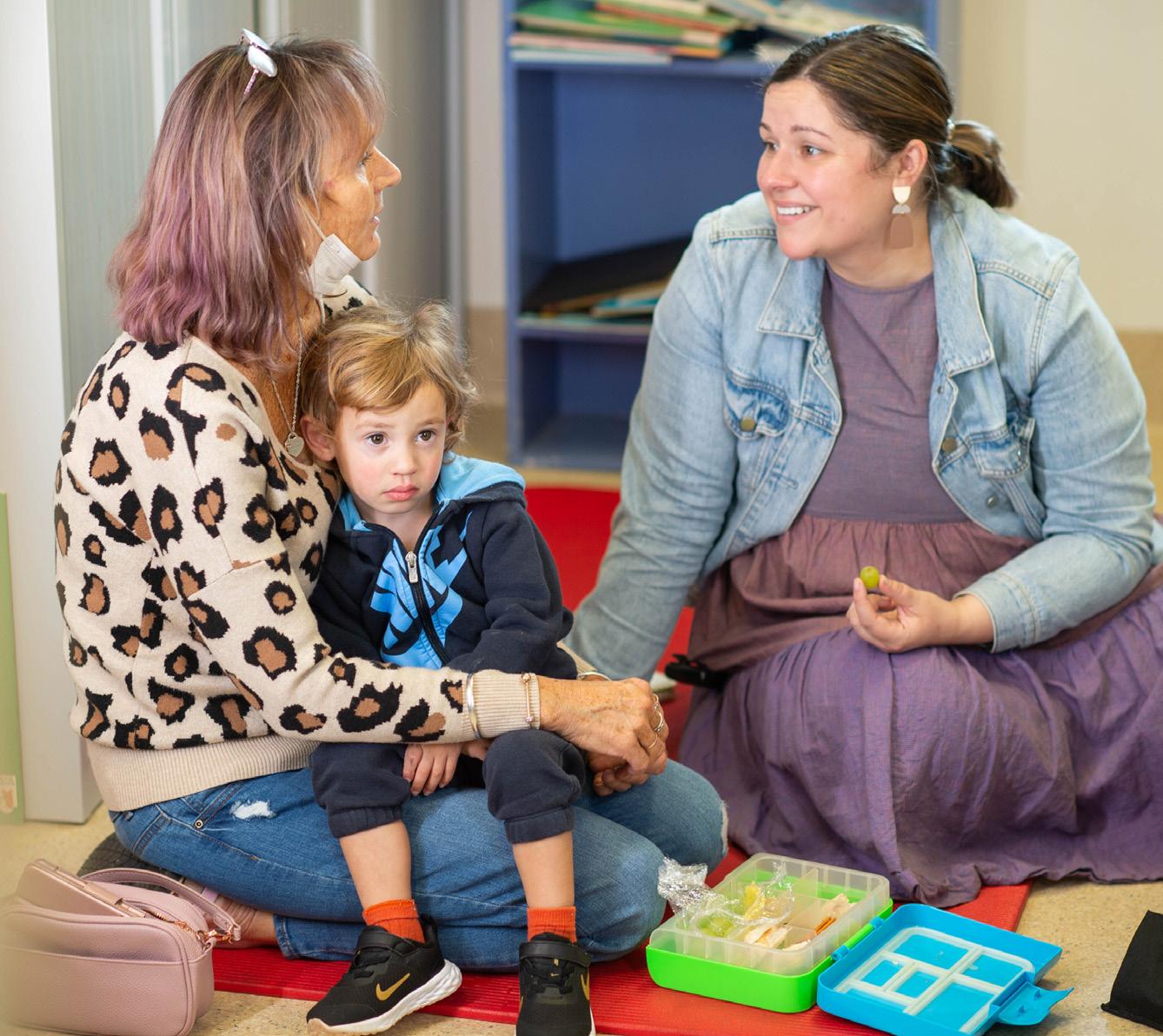
36. Measuring the efficiency of cancer care
39. Using a real-world data registry to create personalised care plans for cancer patients: a value-based cancer care intervention
Advertorial
30.Burnt out? you’re not alone From
42.Become an AHHA
43.More



Allied Health Framework for Value-Based Health Care 2022 Queensland Clinical Excellence Queensland 10 ISSUE 75 / May 2024 17 39 21 Contents Articles
AHHA desk 04.Chief Executive update 06.AHHA in the news
the
member
about the AHHA
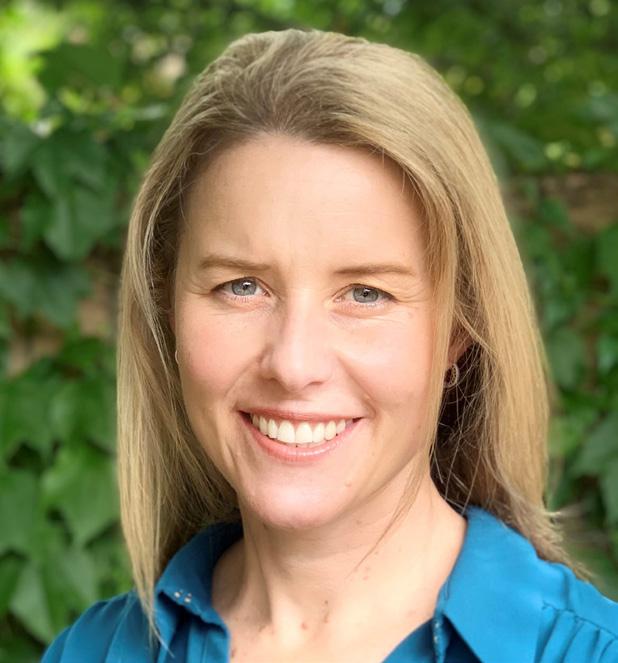 KYLIE WOOLCOCK Chief Executive AHHA
KYLIE WOOLCOCK Chief Executive AHHA
Value-based health care
As the voice of public healthcare in Australia, we see our members dealing with the multifaceted challenges affecting our healthcare system. Unlike a single, overarching obstacle, this landscape is dotted with numerous hurdles.
As a consequence, healthcare unaffordability is escalating, particularly burdening the most vulnerable. Additionally, navigating healthcare pathways has become a complex task, marked by long waiting lists and a lack of information on treatment options available or costs involved.
As a consequence, healthcare unaffordability is escalating, particularly burdening the most vulnerable. Additionally, navigating healthcare pathways has become a complex task, marked by long waiting lists and a lack of information on treatment options available or costs involved.
A major factor that can contribute to improvement across the Australian public healthcare sector centres on the implementation of value-based health care (VBHC). This approach emphasises outcomes achieved, resources utilised, and transparent decision-making. At its core, VBHC fosters collaboration between patients, providers, and policymakers to ensure healthcare delivery aligns with community needs.
Intervention is necessary at multiple levels to realise this vision. Implicit steps include empowering individuals through shared decisionmaking at the micro-level, collaboratively designing care pathways at the meso-level, and aggregating outcomes data at the macro-level.
Initiatives like the Safety and Quality Commission’s healthcare variation analysis and the Independent Health and Aged Care Pricing Authority’s exploration of value-based payment models are commendable. However, a structured approach to scaling and spreading innovative care models remains elusive.
The Australian Healthcare and Hospitals Association’s Australian Centre for Value-Based Health Care has become a nexus for stakeholders across the healthcare spectrum. By bridging public and private sectors and aligning disparate interests, this initiative aims to streamline the implementation of VBHC principles nationwide.
While our journey toward a better healthcare system may be challenging, it is not insurmountable. By embracing the principles of value-based health care and fostering collaboration, we can navigate this complex terrain and pave the way for a healthier, more equitable Australia. ha
4 The Health Advocate • MAY 2024

“At its core, VBHC fosters collaboration between patients, providers, and policymakers to ensure healthcare delivery aligns with community needs.”
The Health Advocate • MAY 2023 5 CHIEF EXECUTIVE UPDATE GraphicStock
AHHA in the news

Measured approach welcomed but long-term vision essential
It is important to recognise that Australia’s population is ageing and the number of people living with chronic illness is greater than at any other time in history.
Rapidly increasing financial pressures have resulted in many Australians delaying or forgoing necessary medical treatment.
This has had a particularly devasting effect on those who are least likely to be able to afford out-of-pocket healthcare costs. Affordability is also a barrier when it comes to medications.
While AHHA welcomes the government’s measured approach to this Mid-Year Economic and Fiscal Outlook (MYEFO) budget, including the redistribution of investments to continue funding for strengthening Medicare, increasing access to medications and implementing NDIS and aged care reforms, a long-term vision for health system reform must underpin investments allocated in next year’s full budget to ensure entrenched problems within the healthcare system are finally addressed. You can also read our recent media release, following the budget's release. ha
1 FEBRUARY 2024

Professor John Deeble’s legacy: 40 years of Medicare
As we mark the 40th anniversary of Medicare and the negotiations for the new National Health Reform Agreements commence, it is time for all governments in Australia to reflect on the principles on which Medicare was founded: equity, efficiency, simplicity and universality.
These founding principles were close to heart for the co-architects of Medicare, Professor John Deeble and Doctor Dick Scotton, who were determined to provide Australians with a dependable and equitable healthcare system.
AHHA has been fortunate enough to have worked closely with Professor John Deeble, who was a life member of AHHA and the namesake of our Deeble Institute for Health Policy Research.
Universal health care, through Medicare, is a much-loved feature of our Australian way of life. This anniversary is not just about reflecting on how Medicare can be reformed to achieve better health for Australians, it’s about reflecting on how we can reinforce the kind of health care that Australians want, and honouring the legacy and principles on which Medicare was founded. ha
14 DECEMBER 2023
6 The Health Advocate • MAY 2024
FROM THE AHHA DESK
HAVE YOUR SAY...
We would like to hear your opinion on these or any other healthcare issues. Send your comments and article pitches to our media inbox: communications@ahha.asn.au 5 MARCH 2024

From policy to practice — engaging older persons and their carers as co-researchers
A new Perspectives Brief released by the Deeble Institute for Health Policy Research, lays the foundations for successfully engaging older persons, as well as their carers, as co-researchers in order to improve the delivery of health care that meets their needs.
The Brief ‘Translating policy into practice by engaging older persons and their carers as co-
researchers’, led by Dr Hannah Beks (Deakin University), explores the numerous benefits, as well as the current barriers to meaningfully engaging older persons and their carers in participatory health research. In order to function effectively, health care systems need to be responsive to the changing needs of our populations. ha
The Health Advocate • MAY 2023 7
pixabay.com/en/elderly-corridor-doctor-1461424
AHHA in the news
7 MARCH 2024


Perspectives Brief
Transforming for value-based health care:Lessonsfrom NHS Wales
Operationalising value-based health care innovation and reform in Australia

The sustainability of healthcare systems around the world are under threat, with the way we design and deliver care in need of reform. The international movement of value-based health care (VBHC) presents a structured, whole of system approach to bring all parts of the system together to drive transformational reform that addresses the complex interplay of the issues undermining sustainability.
A new Perspectives Brief released by the Deeble Institute for Health Policy Research, and coauthored by leaders from AHHA’s Australian Centre for Value-Based Health Care and the Welsh Value in Health Centre, explores the evolution of VBHC and the lessons we can learn from international leaders to support VBHC operationalisation in Australia.
The Brief ‘Transforming for Value-Based Health Care: Lessons from NHS Wales’ reflects on the growth of the grassroots VBHC movement and its evolution to encapsulate ideas of equity, public value, context and social, environmental, and cultural outcomes. ha

Partnership to propel environmentally healthcare practices in Australia
The International Hospital Federation (IHF)’s Geneva Healthcare and Hospitals Association (AHHA) have teamed up to drive environmental sustainability within Australian hospitals and healthcare delivery settings. This collaboration will focus on the adoption and utilisation of the Sustainability Accelerator Tool (SAT), a digital platform developed by the IHF’s Geneva Sustainability Centre in collaboration with Deloitte Switzerland. Piloted with hospitals across the IHF’s global membership, the SAT empowers hospitals and healthcare leaders by providing a digital solution for strategic planning and performance benchmarking, to drive sustainable, low-carbon, equitable, and resilient healthcare systems. Underpinned by a framework of global key performance indicators, the SAT targets three key domains: Environment, Health equity and wellbeing, and Leadership and governance. ha


15
APRIL 2024
FROM THE AHHA DESK
8 The Health Advocate • MAY 2024 Ms Emma Hoban ManagerAustralian Centre forValue-Based Health Care AustralianHealthcareand Hospitals Association value@ahha.asn.au Dr Sally Lewis National Clinical Director for Value Based Health Care WelshValue in Health Centre, NHS Wales Ms Kylie Woolcock Chief Executive Officer Australian Healthcareand Hospitals Association Adj AProf Rebecca Haddock Executive Director KnowledgeExchange Australian Healthcareand Hospitals Association
No: 30 March 2024



The Health Advocate • MAY 2023 9 Enabling hospital and healthcare leaders to advance on their sustainability journey Sustainability Accelerator Tool (SAT) www.gscaccelerator.org Go sustainable with the SAT Understand current maturity level in terms of sustainability. Get guidance to reach the next level. Track, benchmark, and report your progress. Access good practice examples. Make the case for funding.
KATELYN CLARKE A/Director, Allied Health, Office of the Chief Allied Health Officer (OCAHO), Clinical Excellence
Queensland EMMA HOBAN Manager, Australian Centre for Value-Based Health Care, Australian Healthcare and Hospital Association

Lessons from a value-based health care implementation pilot
Between 2020 and 2023, within the context of global, national and state-level value-based health care (VBHC) reform agendas, the Office of the Chief Allied Health Officer (OCAHO), Clinical Excellence Queensland, engaged the Australian Healthcare and Hospitals Association (AHHA), to collaboratively develop, implement and evaluate a Queensland Health Allied Health Framework for Value-Based Health Care (the Framework). The aim of the Framework is to facilitate the design and implementation of VBHC services and adoption of VBHC principles within allied health services across the state.
The project occurred over two phases. In phase one, the Framework was iteratively and collaboratively developed with consumers and the Queensland Health allied health community of clinicians, managers and executives. Phase two focused on the implementation and evaluation of the Framework across five allied health service pilot sites.
This article highlights the key lessons that emerged when evaluating the implementation of the Framework that are applicable to a broader health care audience, beyond allied health services. These insights offer valuable guidance for effectively operationalising VBHC transformation within the broader health system context.
10 The Health Advocate • MAY 2024
LESSON 1
Partnering with consumers for service design and planning is a new skill for most clinicians
There is a strong evidence base demonstrating the value and importance of consumer engagement in the design and delivery of high-quality health care (ACSQHC, 2023), (Dalton et al, 2015). Appropriately, it is a requirement for health service accreditation in Australia, and a national policy priority as per the ‘Partnering with Consumers Standard’ in the National Safety and Quality in Health Services (NSQHS) Standards (ACSQHC, 2023), and the Draft National Consumer Engagement Strategy for Health and Wellbeing, recently released for consultation (DoHAC, 2023).
However, findings from the evaluation of the Framework reveal a significant gap in the readiness of health professionals to engage with consumers for the purposes of designing patientcentred services. While the pilot site project leads recognised the value and necessity of consumer engagement for VBHC, they did not know how to go about doing it, and when to access support and advice. All pilot sites reported this as a barrier to implementation and for at least one site, it was insurmountable to VBHC service design and implementation.

The experience of the pilot sites highlighted a need for organisations to direct focus on the strategic and practical aspects of consumer engagement at all levels. Policies and consumer partnership models need to be embedded and practically supported by organisational governance, providing health professions with training, resources and safe and effective processes to apply consumer engagement methodologies when seeking to embed genuine consumer partnerships in the development of new models of care. This will generally involve establishing and maintaining relationships and arrangements with local consumer organisations.
For clinicians and service managers, the allocation of sufficient non-clinical time and resourcing must be prioritised to develop the mutually beneficial respectful, transparent and trusting relationships with consumers that are essential for collaboration at all stages of VBHC design and implementation. >
The Health Advocate • MAY 2023 11
Queensland Health Clinical Excellence Queensland
Allied
Health Framework for Value-Based Health Care 2022
“The process of developing, implementing and evaluating the Framework has demonstrated that from an individual, team and organisational perspective, VBHC is a concept that makes sense and health professionals see great value in shifting systems in services to focus on what matters to patients, not just achieving economic efficiency or clinical outcomes.”
LESSON 2
Project Management skills don’t come naturally and are developed over time.
As with other industries and professions, it is well understood that there is a positive relationship between the effective use of project management methodology and project success in health care (Joslin, Müller, 2015). However, it became apparent when evaluating the success of the implementation of the Framework that project management is often a new or underdeveloped skill set for most clinicians. Limited understanding of project management methodologies and their practical application proved a widespread challenge impacting progress, with almost all pilot sites requiring some form of project management and implementation guidance to manage their VBHC project.
The pilot sites that were able to progress their pilots more successfully applied elements of a project management methodology, with project team members who had project management experience, or knowledge of where to access resources and expert assistance within their organisation. At least one pilot site was ultimately unable to implement their model within the timeframe due to project management issues,
highlighting a need for project management capacity building and additional resources to be made available to support the implementation of VBHC. This includes not only education, practical tools and resources, but also the dedication of sufficient non-clinical time to manage projects effectively.
LESSON 3
Do not underestimate the importance of effective change management.
One of the critical differences between pilot sites who successfully implemented their project and those that did not, was the level of focus dedicated to change management and investment in the development of a workforce culture ready for change.
Evaluation findings highlight that leaders transitioning to VBHC should not make the mistake of underestimating the time and effort required to develop and enact a carefully considered and context-specific change management strategy. Passion, planning and a good idea is not enough to ‘will’ a service into being.
Change management strategies that engage the workforce are essential. It is critical to ensure the right people are informed, accept and are engaged in the process of change (Cronkite, 2017). This
12 The Health Advocate • MAY 2024
means bringing the people who will both deliver and use the service along on the co-design journey. This collaborative approach fosters a sense of ownership and commitment among the workforce, aligning organisational goals with frontline perspectives, experiences and needs.
Change champions who have credibility, authority and status are critical to this process (Pizzirani et al, 2019).
Conclusions
The process of developing, implementing and evaluating the Framework has demonstrated that from an individual, team and organisational perspective, VBHC is a concept that makes sense and health professionals see great value in shifting systems in services to focus on what matters to patients, not just achieving economic efficiency or clinical outcomes. Yet it is clear that operationalising VBHC in practice will require more than just an understanding of the concepts and a desire to implement.
It is only through working together to learn, build capacity, and collectively solve problems that will we be able to reorient the way healthcare is designed and delivered in Australia to focus on the outcomes that matter to people and communities. ha
If you would like to know more about how AHHA can support your organisation in the development and implementation of VBHC initiatives, contact us at business@ahha.asn.au.
References:
Australian Commission on Safety and Quality in Health Care 2023, Partnering with Consumer Standard. Available: https://www. safetyandquality.gov.au/standards/nsqhs-standards/partneringconsumers-standard
Dalton J, Chambers D, Harden M, Street A, Parker G, Eastwood A. Service user engagement and health service reconfiguration: a rapid evidence synthesis. J Health Serv Res Pol 2015;21(3):195–205.
Australian Commission on Safety and Quality in Healthcare 2023, Partnering with Consumer Standard. Available: https://www. safetyandquality.gov.au/standards/nsqhs-standards/partneringconsumers-standard
Australian Government Department of health and Aged Care 2023, Draft National Consumer Engagement Strategy for Health and Wellbeing, Available: https://consultations.health.gov.au/nationalpreventive-health-taskforce/draft-national-consumer-engagementstrategy-for-he/
Joslin, R & Müller 2015, ‘Relationships between a project management methodology and project success in different project governance contexts’, International Journal of Project Management, vol. 33, no.6 https://doi.org/10.1016/j.ijproman.2015.03.005
Cronkite, W 2017, ‘Rethinking the Change Adoption Curve’, asae, Available https://www.asaecenter.org/resources/articles/ an_ plus/2017/september/rethinking-the-change-adoption-curve
Pizzirani, B., O’Donnell, R., Skouteris, H., Crump, B & Teede, H 2019, ‘Clinical leadership development in Australian healthcare: a systematic review’, RACP Internal Medicine Journal, vol. 50, no. 12. Available: https://doi-org.virtual.anu.edu. au/10.1111/imj.14713
The Health Advocate • MAY 2023 13
 RUSSELLE TRINIDAD Senior Manager Quality Improvement, Capital Health Network
RUSSELLE TRINIDAD Senior Manager Quality Improvement, Capital Health Network
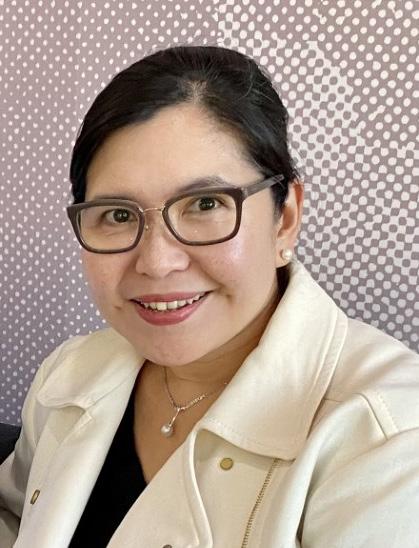 SHEILA BRITO Allied Health Engagement Officer, Capital Health Network
SHEILA BRITO Allied Health Engagement Officer, Capital Health Network
Benefits of social workers in general practice
A key role of Capital Health Network (CHN) as ACT’s Primary Health Network (PHN) is to build capacity in the primary health care sector to improve equity and access to health care and improve health outcomes. One of the ways we do this is to trial new initiatives. Over the last year, CHN commissioned three key trials that were a first in Australia:
• Social Workers in General Practice
• Pharmacists in Residential Aged Care Facilities
• ACT Breathlessness Intervention Service.
This article will focus on CHN’s Social Workers in General Practice trial, which aims to address some of the barriers that people with complex social and health needs experience when accessing health services. The trial need was identified through CHN’s Needs Assessment, highlighting social
determinants of health as a significant barrier to accessing health services.
A)PRELIMINARY RESULTS
The first 18 months of the trial have demonstrated the following positive preliminary results:
PRELIMINARY RESULTS SHOW IMPROVED:

14 The Health Advocate • MAY 2024

B)SOCIAL WORKERS: seeing the benefits first-hand
‘Why wait until someone gets very unwell and needs to go to hospital to place in social and community supports? Why put the ambulance only at the bottom of the cliff? Social Workers have unique skill sets to enhance our community’s quality of life and prevent hospitalisation through early intervention,’ said Social Worker Paul Hill, at the launch of the trial in 2022.
Through this trial, the scope of practice for Social Workers embedded in general practice includes support with socio-legal issues (e.g. Advance Care Directives), grief, domestic violence, advocacy and assistance navigating government services, to name just a few.
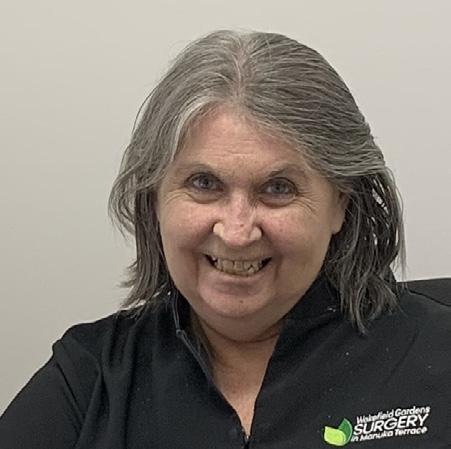
NADINE KNIGHT, from Wakefield Gardens Surgery, is a Social Worker involved in CHN’s Social Workers in General Practice trial.
As part of the trial, Nadine Knight, Social Worker at Wakefield Gardens Surgery, highlighted the crucial role that she plays in improving communication between patients and their health care providers.
‘For me, effective communication is key to delivering holistic care. I value the flexibility to conduct appointments not only here in the practice, but also at a patient’s home. When patients are comfortable, they often more openly share their opinions and concerns. I can also learn more from observing their daily living, which I can relay back
to the GP to enhance overall communication,’ said Ms Knight.
M s Knight highlighted the success of their Pram Walks Program, which she runs with a nurse. She explained she finds great satisfaction in witnessing the growth of social cohesion and the formation of lasting relationships between the parents.

BARBARA SHONE, from Next Practice Deakin is a Social Worker involved in CHN’s Social Workers in General Practice trial.
Over the last 21 years, Barbara Shone has worked with children and families as a social worker. She joined Next Practice Deakin in late 2022 as part of CHN’s Social Workers in General Practice trial. Barbara explained that she loves working in the general practice setting and receives daily positive feedback from her clients, which really ‘recharges her battery’.
‘I’m a big advocate for having Social Workers in general practice and wish it would expand. I’ve seen the benefits first-hand as we can assist in so many ways. For example, a GP may notice a deterioration in mobility in their elderly patient and suggest that they need their Aged Care Assessment reviewed, so they refer them to me. I’ll help the patient navigate the aged care process to access the appropriate support. In fact, I assist many clients with complex challenges to liaise with government agencies such as Centrelink, NDIS, Housing ACT and advocate for them to receive the support that they need,’ said Ms Shone. >
The Health Advocate • MAY 2023 15
“The Social Workers have decreased pressure on GPs and brought new skills and experience to the practices. Social Workers are playing a role in supporting, connection and ‘anchoring’ other members of the practice team and educating the general practice teams.”
C)GP AND PRACTICE MANAGER:
trial eases GP load and enhances patient health outcomes
From a GP perspective, Dr Paresh Dawda, the Director and Principal at Next Practice Deakin, discussed the benefits of general practice-based Social Workers.
‘Barb has been a fantastic asset to the team and has demonstrated the enormous value of having a Social Worker embedded as part of the practice team, supporting our patients, family, carers and the practice team,’ said Dr Dawda.
Another GP Champion said that ‘The Social Workers have decreased pressure on GPs and brought new skills and experience to the practices. Social Workers are playing a role in supporting, connection and ‘anchoring’ other members of the practice team and educating the general practice teams’.
From the perspective of a Practice Manager, Kristy Stanford at Wakefield Gardens Surgery described the positive impact of having a Social Worker in general practice, emphasising their
ability to provide immediate and comprehensive responses to patient needs.
‘Social Workers help our patients to navigate the health care system, which can sometimes be complex. This eases the load on our GPs and enhances health outcomes for the patient,’ said Ms Stanford.
D) INDEPENDENT EVALUATION
The trial has been extended until March 2025, and the University of Canberra will be conducting an independent evaluation this year. CHN has funded 4 general practices to participate in the trial: Fisher Family Practice, Interchange Health Co-operative, Next Practice Deakin and Wakefield Gardens Surgery.
Patients of the participating practices can access a Social Worker through self-referral or referral from their GP or residential aged care facility. Carers and family members can also refer patients with their consent. The trial is supported by funding from the ACT PHN through the Australian Government’s PHN Program. ha
16 The Health Advocate • MAY 2024
Could group ‘languishing’ be affecting your team?
The need for integrated, teambased models of care has been promoted for decades, yet the system is still facing challenges in operationalising such models. Team-based care occurs when care providers work together with a shared focus centred on a person’s needs and with collective ownership of the goals to be achieved. As well as being good for individual care, such models can build capacity for a region or community and provide a supportive environment for providers.
With this in mind, we invited Dr Simon Craig, author of ‘From Hurting to Healing –Delivering Love to Medicine and Healthcare’ to share his views as part of the Australian Centre for Value-Based Health Care webinar series. Below he shares more on the connection between teams and workforce wellbeing. – Kylie Woolcock, CEO, AHHA
>
 Dr Simon Craig
Dr Simon Craig
The Health Advocate • MAY 2023 17
“It wasn’t burnout — we still had energy. It wasn’t depression — we didn’t feel hopeless. We just felt somewhat joyless and aimless.”
In the early 2000’s sociologist Core Keyes coined the term ‘languishing’ as it related to wellbeing. Keyes described languishing as the region between poor psychological health and complete psychological health (or ‘flourishing’). Importantly from an individual perspective, flourishing was not simply an absence of mental illness — but more a state filled with positive emotion and functioning well psychologically and socially.
Languishing, however, was a state of both not feeling good and not functioning well. Perhaps languishing could be considered the midpoint of a continuum between psychological ill-health and complete psychological wellbeing or flourishing.
In 2021, organisational psychologist Adam Grant popularised the term with an article in the New York Times, ‘There’s a Name for the Blah You’re Feeling: It’s called Languishing’.
The sentiment of languishing resonated with many people at that time. As Grant described,
‘It wasn’t burnout — we still had energy. It wasn’t depression — we didn’t feel hopeless. We just felt somewhat joyless and aimless.’
Can teams languish?
We are all aware of the significant effects of burnout on healthcare workers individually, but as we emerge from Covid it also feels as though many of our teams and organisations may be languishing — not obviously failing, but definitely not thriving. Is that possible? Or is languishing only an individual phenomenon, rather than something that can affect a whole group? In my view languishing in an entire team is possible. Indeed, transmission of a shared affective experience is more common than we currently recognise. Clearly, the overall emotional state of any team is of vital importance in the way the group operates and the results that are produced.
A languishing team could be one that is still functioning, but not anywhere near it’s potential, or a team that still has energy to do the work, but is not energised by the work. Sound familiar?
A languishing organisation may not feel helpless and depressed, but there may be a collective lack of happiness and joy. Does this sound like your institution? Does it feel like the days are just being endured one-by-one, without any highlights or passion?
18 The Health Advocate • MAY 2024
Recognition of a problem
Often, acknowledging the truth of any situation can be the first step towards the resolution of a problem. In a group that is worn out and listless — or going through the motions — by becoming aware of the state of languishing, recovery to a more enjoyable state can occur. There is a saying ‘naming leads to taming’. This implies that recognition of feelings and emotions leads to better control of them rather than being controlled by them.
Recognition of events that have resulted in a current shared lack of excitement and motivation must provoke leaders to ask ‘where are we at?’
Teams with the self-awareness and ability to address current suboptimal emotional states within the group can begin the journey back to collective flourishing. Exhibiting the courage to jointly selfreflect are behaviours of a high-functioning team — even one that has taken a hit.
“There’s a name for the blah you’re feeling: it’s called languishing.”
Overcoming languishing
For individuals who are languishing, the advice of Grant and others is to recognise small wins and moments of joy in a bleak time. It is suggested to look for activities that promote flow — where you can be immersed in activities that consume your attention and that are rewarding, challenging, and enjoyable. Uninterrupted time without distraction has also been proposed as important in recovering from individual languishing.
It is possible that teams which are languishing may have advantages over individuals. A shared problem that is discussed and addressed is easier to handle than each individual coping with challenges in a solitary way. The group that collectively addresses the challenges of team languishing will return to top performance most quickly.
The joint plan to overcome languishing will most likely have been conceived with multiple opinions and views — optimal team behaviours that create inclusion and better bonds. The communication that is provoked may, of itself, help with the aimlessness and silence that can accompany languishing.
Indeed, periods of team languishing may be essential in making advances as a group. Deciding together how to deal with the problem, and exploring strategies to facilitate more joy at work could be the spark that is required for creative leaps. The feeling of joint discomfort, shared challenges, and reliance on team members to overcome the situation together, may be a step in producing a high-functioning team. ha
Dr Simon Craig is a medical doctor, coach, and organisational culture analyst. He is the founder of PosMed and the author of ‘From Hurting to Healing — Delivering Love to Medicine and Healthcare’. To reach him — simon@PosMed.com.au
The Health Advocate • MAY 2023 19


WE KNOW HEALTH
Consulting services by health sector experts, for the health sector
Through a connected and systemic view, we support Australian healthcare organisations in today’s rapidly changing healthcare environment
Our consultants are highly experienced and talented individuals with clinical, managerial, policy and research backgrounds
For over a decade, our consulting team has been guiding healthcare organisations across the country to tackle their toughest challenges
From national strategies to service providers, we provide tailored solutions that are:
Effective and outcomes-focused
Accessible and equitable
Sustainable for the long-term
We strive for system-wide solutions with our expertise spanning:
Ngunnawal Country Unit 8, 2 Phipps Close Deakin ACT 2600 admin@ahha.asn.au +61 2 6162 0780 Strategy and Policy Sustainability Value-based health care Workforce
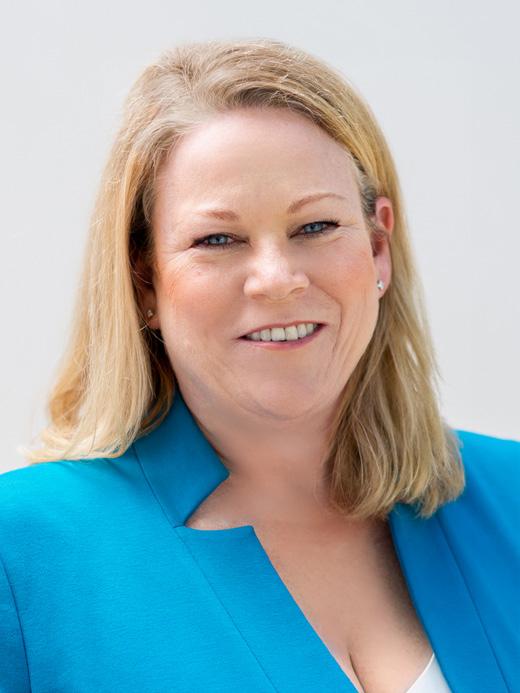 SUSAN MCKEE CEO, Dental Health Services Victoria
SUSAN MCKEE CEO, Dental Health Services Victoria
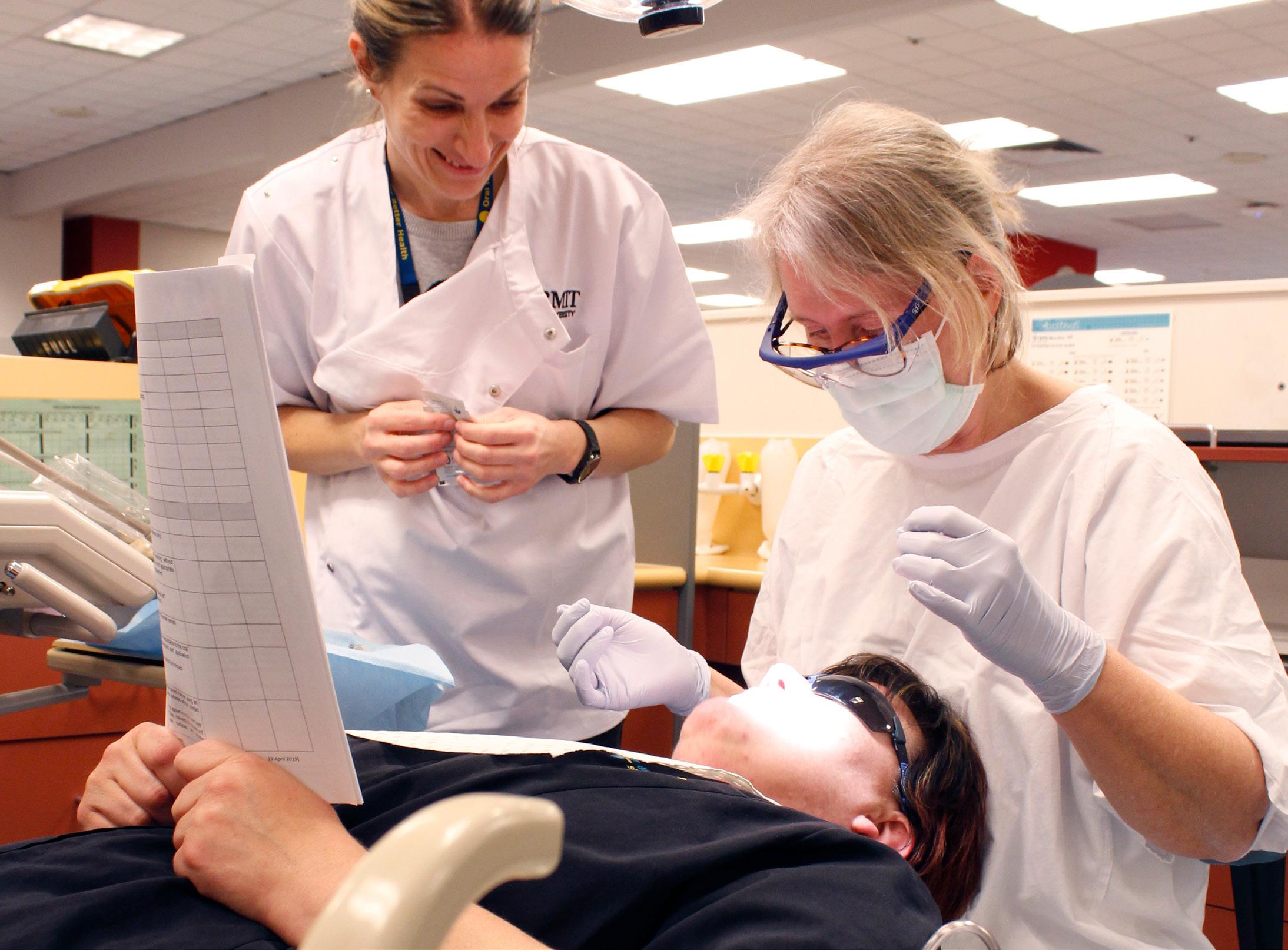
The importance of private-public
partnerships in delivering personcentred value-based health care
Systemic change can’t be achieved in silos. It requires a shared vision across sectors.
It’s not alarmist to admit that our health system is in crisis. Across Australia, healthcare providers are grappling with growing demand, rising costs, rapid advancements in technology, workforce shortages and staff burnout. A Person-Centred Value-Based Health care (PCVBHC) approach will help address
these complex challenges, but it cannot be implemented or progressed in a vacuum. A wholesystem approach like PCVBHC requires wholesystem buy-in. It requires the public and private sectors to work collaboratively towards a shared vision in an environment built on transparency and mutual trust.
Building public-private partnerships in a system where patch protection and silos are part of our collective history is no mean feat. But the benefits are immense.
>
The Health Advocate • MAY 2023 21
“We tend to put governments, public and private healthcare providers into separate boxes but fundamentally we all want the same thing — to improve the population’s health in a patientcentred, cost-effective, and sustainable way.”
As the lead public oral health agency in Victoria, Dental Health Services Victoria (DHSV) has pioneered the adoption and implementation of PCVBHC in oral health. Along the way we have learned the importance of fostering interoperability, aligning incentives, and building critical trust with our partners across governments and the private sector. Here’s what we’ve learned.
A shared vision is the foundation for cross-sectoral collaboration
We tend to put governments, public and private healthcare providers into separate boxes but fundamentally we all want the same thing — to improve the population’s health in a patientcentred, cost-effective, and sustainable way. That’s a compelling shared vision to build upon.
A s we navigate the intricacies of PBVBHC, we can’t lose sight of its core principles because they’re incredibly powerful in securing buy-in from partners. Before taking any action, we need to collectively ask, ‘Is this in the best interests of the patient?’ and ‘Will this improve patient health outcomes?’ If the answer is yes, incentives align, and action follows.
Mutual gains contribute to overarching progress
In any collaboration, it’s natural for each partner to wonder, ‘What’s in it for me?’ In the realm of PBVBHC, collaboration has a lot to offer all sectors.
For example, private companies partnering with governments and public providers gain invaluable insights into real-world scenarios and a deeper understanding of population health trends.
In turn, governments and public providers gain access to custom technology solutions informed by the rich data we provide. This advances our separate objectives as well as our overarching goal of enhancing healthcare delivery for the benefit of all.
You can’t just leave the door ajar, you have to invite partners into the room
A PCVBHC approach requires extensive and consistent collaboration to integrate care across sectors and organisations. During the COVID-19 pandemic, traditional public-private stakeholder boundaries fell out of sheer necessity. Often they fell too late, shining a stadium light on what we already knew — that a lack of integration leads to poor health outcomes, particularly for the most vulnerable in our communities.
When DHSV worked with the International Consortium of Health Outcomes Measures (ICHOM) to develop a standard data set to measure oral health outcomes, we ensured that consumers, government representatives and leading private health insurers were involved in the ICHOM working groups. Involving these key partners early in the process proved invaluable in aligning our PCVBHC thinking.
22 The Health Advocate • MAY 2024
“Putting patient interests at the heart of our collective decisionmaking is key. “

Take the time needed to prove that your approach works
If you’re pushing for major health reform, your partners will want proof that your proposed approach will work. Understandably, governments are wary of ‘breaking’ the system and with PCVBHC we’re not just talking about new service delivery models, we need a new outcome-based funding model.
Before you jump into fixing the system, test it. In 2018, DHSV started testing our PCVBHC model of care at the Royal Dental Hospital of Melbourne. We saw a 60% increase in preventative interventions and an 80% decrease in dentists doing work that could be done by other professionals, thereby freeing up dentists to focus on more complex cases. We also saw a big drop in failure-to-attend rates.
As we shared these results with our government and private partners, support for PCVBHC began to surge. We also learned some valuable lessons on what worked and what didn’t so we could refine the model before expanding it.
Over my 40 years in hospital and healthcare settings, I’ve learned that any change — big or small — starts with collaboration. Not just ticking a box to say you’ve consulted with your partners, but in-depth collaboration underpinned by a ‘we’re in this together for the greater good’ mentality. PCVBHC is a rapidly evolving and dynamic space. This is an opportunity for us to shape a more efficient and sustainable healthcare system that is centred around the long-term wellbeing of individuals and their communities. Together we can create a better healthcare system for all. ha
The Health Advocate • MAY 2023 23
 TRACEY DUFFY First Assistant Secretary –Medical Devices and Product Quality Division, Therapeutic Goods Administration
TRACEY DUFFY First Assistant Secretary –Medical Devices and Product Quality Division, Therapeutic Goods Administration
Enhancing consumer safety and trust in Australia’s healthcare system
Revolutionising the safety of medical devices
Whilst the regulatory requirements for medical devices in Australia are some of the most stringent in the world, the Therapeutic Goods Administration (TGA) has been working to further strengthen the system and improve patient safety and health outcomes.
An Action Plan for Medical Devices is a 3-part strategy to strengthen Australia’s regulatory system and provide greater transparency whilst continuing to be patient focused. The actions outlined in the plan focus on the safety, performance, and quality of medical devices approved for use in Australia and improving health outcomes for patients who rely on these medical devices. The Australian Government has endorsed the TGA to progress multiple aspects of the Action Plan,
including establishing the Australian Unique Device Identification (UDI) system and mandatory reporting of medical device related adverse events by healthcare facilities.
Unique Device Identification
The UDI system is a global initiative that will allow tracking and tracing of medical devices through the supply chain. The identifiers are intended to be used throughout processes including procurement, healthcare organisation systems, registries and patient records. Of particular importance, is the ability to record the specific identifiers of devices implanted in patients. If there are problems or recalls associated with a particular device, the identifier can be used to reduce the time and
24 The Health Advocate • MAY 2024

confusion in confirming if the affected devices are on hospital shelves, or being able to identify patients who may be affected.
Patient records, discharge summaries and private health insurance claims could include the UDI to provide patients with information regarding their specific implanted device.
It will be a legal requirement that manufacturers of medical devices supplied in Australia include the UDI on all labelling and levels of packaging and in some cases on the device itself. The TGA will maintain a public UDI database that stores all UDI information, along with other information about each device. The UDI will be provided in machine readable format for use with scanning technology, as well as via a series of numbers and letters that can be manually recorded.
To maximise the benefit of UDI, healthcare related stakeholders should consider building the capability to record the UDI in their business processes and information systems. Benefits of recording the UDI in healthcare supply chains and systems, include:
• Strengthening of medical device adverse event reporting
• More effective post-market surveillance and recall actions
• Faster identification and notification of patients who may have medical devices of concern
• Quicker removal of devices from supply chains and hospital inventories.
>
The Health Advocate • MAY 2023 25
GraphicStock
“Mandatory reporting of adverse events to the TGA currently only applies to sponsors and manufacturers of medical devices. Expanding this to cover hospitals is designed to ensure the earlier identification of, and quicker public health responses to, safety issues involving the use of medical devices.”
Mandatory reporting of medical device adverse events by healthcare facilities
The Therapeutic Goods Act 1989 was amended in March 2023 making it mandatory for public, private and day hospitals to report certain medical devicerelated adverse events to the TGA. Regulations that will set out the type of data to be reported, frequency of reporting and other more detailed aspects of the new reporting scheme are required to be in place by March 2025. Mandatory reporting of adverse events to the TGA currently only applies to sponsors and manufacturers of medical devices. Expanding this to cover hospitals is designed to ensure the earlier identification of, and quicker public health responses to, safety issues involving the use of medical devices.
The TGA has established an Interjurisdictional Steering Committee with representatives from states and territories, healthcare facilities and the Australian Commission on Safety and Quality in Health Care (ACSQHC) for the governance of the mandatory reporting framework and to co-design the scheme.
The ACSQHC will be also updating the third edition of the National Safety and Quality Health Service (NSQHS) standards to include a requirement to report adverse events to the TGA. Accreditation against the updated standards will be an important element in demonstrating compliance with the legislated mandatory reporting requirements.
Recall Reforms
The TGA is also reforming Australia’s recall processes for all therapeutic goods — medical devices, medicines and biological products. Changes will simplify and improve the way that recall information is communicated throughout the entire supply chain, including to hospital personnel and patients. Changes will similarly introduce operational efficiencies, provide clearer recall guidance and reduce regulatory burden.
Some of these improvements have been published in the latest version of the Uniform Recall Procedure for Therapeutic Goods V2.4, dated 25 March 2024.
How to get involved
Changes to healthcare systems and processes are required to realise the benefits of the TGA’s regulatory efforts to improve patient safety. Hospitals and healthcare professionals are already busy, however the TGA is assisting the sector where possible to implement and adopt these regulatory reforms within the healthcare system. ha
To find out more about any of these initiatives please visit the TGA website:
• UDI Hub
• Mandatory Reporting
• Presentation: Recall reforms | Therapeutic Goods Administration (TGA)
• Overview of Unique Device Identification for Australian Healthcare
26 The Health Advocate • MAY 2024

Educating community,
Connecting healthcare providers vital to improving diabetes care in South Western Sydney
Diabetes is one of South Western Sydney’s most significant health problems.
According to the South Western Sydney Diabetes Framework to 2026 (diabetesframework.pdf (nsw. gov.au)) report, a collaboration between South Western Sydney Primary Health Network (SWSPHN), South Western Sydney Local Health District (SWSLHD), local clinicians, consumers and peak bodies:
• In 2019, between 66,000 and 80,000 South Western Sydney residents were living with diabetes
• by 2025, there will be up to 122,000 people in South Western Sydney living with diabetes and by 2031, up to 151,000
• type 2 diabetes is the most common form of diabetes, accounting for 85 to 90% of cases
• in 2019, the total cost of providing care and government subsidies for people aged over 30 with diabetes in South Western Sydney was estimated at $872 million.
A s a key local priority, SWSPHN is working with SWSLHD and healthcare providers across our region to improve the way services are provided to people with diabetes.
>
The Health Advocate • MAY 2023 27
SOUTH WESTERN
SYDNEY PRIMARY HEALTH NETWORK
Dr Vipin Goyal (above left), from Liverpool Medical Centre, demonstrates how to conduct a blood glucose test
“As a key local priority, SWSPHN is working with SWSLHD and healthcare providers across our region to improve the way services are provided to people with diabetes.”
SWSPHN and SWSLHD have partnered on the following projects:
TYPE 2 DIABETES CASE CONFERENCING CLINICS
Type 2 Diabetes Case Conference Clinic Days (Type 2 Diabetes Case Conferencing Clinics | South Western Sydney PHN (swsphn.com.au)) assist GPs to support patients with type 2 diabetes.
A specialist diabetes team from the local hospital hold the in-person clinics at the GP practice for eight patients, in the presence of the GP, an endocrinologist and a diabetes educator.
The clinics are convenient and allow for improved patient care.
Patients can avoid the cost, travel, parking and long wait times to get in to see a specialist, while accessing continuity of care. GPs can learn from diabetes specialists, to upskill and broaden their experience in diabetes management.
Currently, two diabetes clinics are held weekly across South Western Sydney. More than 50 clinics were held in 2023, and 70 practices have already scheduled clinics for 2024.
TELEHEALTH TYPE 2 DIABETES CASE CONFERENCES
A Telehealth Type 2 Diabetes Case Conferencing (Telehealth type 2 diabetes case conferencing for GPs | South Western Sydney PHN (swsphn.com.au)) service is available to GPs across South Western Sydney, providing easy access to advice from an endocrinologist and diabetes educator.
The consultations are usually undertaken in the absence of the patient, however, the patient can be present if the GP prefers.
The telehealth case conferences aim to increase the confidence of GPs in managing type 2 diabetes patients, and support an integrated approach to diabetes across general practice, allied health, hospital and specialist services.
28 The Health Advocate • MAY 2024
“SWSPHN Chief Executive Officer, Dr Keith McDonald PhD, said the diabetes framework identified an urgent need to change the way in which services were provided to people with diabetes, and recognised the importance of a sustained and integrated response to combat the disease.
PRE-PREGNANCY AND CONTRACEPTION PLANNING
SWSPHN and SWSLHD have collaborated with Western Sydney University to deliver the Diabetes Contraception and Pre-pregnancy Program (DCAPP) (DOMTRU | Diabetes Contraception and Prepregnancy Program (DCAPP) (westernsydney.edu. au)) across the region.
Having diabetes during pregnancy may increase the risk of birth defects and early pregnancy loss, especially for unplanned pregnancies.
High rates of congenital malformations exist in South Western Sydney in women with type 1 and type 2 diabetes (11.6% Bankstown, 11% in Campbelltown and 6.8% in Liverpool, compared with 1.7% in NSW).
With a bit of extra planning and care, women with type 1, type 2 and other types of permanent diabetes usually have a healthy baby. Planning for pregnancy and keeping good control of blood glucose levels for at least three months before stopping contraception can greatly reduce the chance of complications.
‘Providing people living in South Western Sydney with access to diabetes prevention and treatment services which meet their changing needs, are key principles of the diabetes framework,’ he said.
‘Educating our community about diabetes, and facilitating connections between primary care and hospital specialists are vital to enhancing care for and improving the quality of life of patients with diabetes. They will also play an important role in decreasing avoidable hospital admissions.’
TYPE 2 DIABETES MANAGEMENT
SESSION FOR PATIENTS
The free Type 2 Diabetes Management Sessions (Attend a diabetes coaching session for a healthier lifestyle | South Western Sydney PHN (swsphn.com.au)) are a healthy lifestyle program to support people with type 2 diabetes, and their families, learn how to manage their diabetes to stay healthy and well.
The sessions are delivered in an informal interactive small group setting with up to eight people. This allows participants opportunities to ask questions, and to meet others with type 2 diabetes and learn from their experiences.
Topics discussed include: how to eat well; managing blood sugar levels; recommended exercises and how often; why avoiding alcohol is important and tips to help; and questions to ask the GP.
SWSPHN and SWSLHD hold two education sessions a month in response to interest from the South Western Sydney community. ha
The Health Advocate • MAY 2023 29
Burnt out? you’re not alone
Burn out significantly affected frontline workers during COVID lockdown periods, including those working in health and community services.

While the days of lockdowns may be behind us, the impact of COVID has inspired many of us to examine our priorities and make a change to our work/life balance. That might look like taking more time off, or switching career directions completely.
Taking time off
If you’re thinking of having a break and taking some time off paid work, it’s a good idea to check three things related to your super first.
1. REDUCE YOUR EXPENSES
Working out where you spend your money isn’t always fun, but it is worthwhile. With cost-of-living pressures continuing to rise, managing your money can help you stay on top of your spending and bills. It can also help you build a more financially secure future. Have a look through your bank statements
and categorise your expenses to see where you could cut down — you might be surprised!
2. UNDERSTAND HOW TIME OFF OR REDUCED HOURS MAY IMPACT YOUR RETIREMENT
Your employer super contributions are determined by your ordinary time earnings. If you reduce the hours you’re working or take time off, this is naturally going to reduce the amount of super you receive from your employer — and the amount you have at retirement.
3. CHECK IF YOU’RE COVERED FOR NOT BEING ABLE TO WORK
It’s worth checking if your income protection insurance will cover you for this time off. If you suddenly become sick or injured while you’re not working, you want to make sure you’re still covered.
30 The Health Advocate • MAY 2024 ADVERTORIAL
“I want a super fund that’s an expert at managing money.”

Changing career directions
No matter where your career takes you, you can take your HESTA super with you.
If you’ve started a new job – or you’re about to — staying with HESTA is simple. You just need to let your employer know that you’d like your super paid into your HESTA account.
Simply complete the Choice of super fund request form and give it to your employer.
Staying put
If you need some help with your mental health, the Ask Izzy website can connect you with nearby counselling services across Australia. You can also search for over 400,000 other services close to you, including financial assistance, meals, shelter, family violence support, and much more.
Issued by H.E.S.T. Australia Ltd ABN 66 006 818 695 AFSL No. 235249, Trustee of HESTA. The information shown is general information only. It does not take into account your objectives, financial situation or specific needs so you should look at your own financial position and requirements before making a decision. You may wish to consult an adviser when doing this. For more information, contact us or visit hesta.com.au/pds for a copy of a Product Disclosure Statement which should be considered when making a decision about the HESTA products on this website and to consider the relevant risks. The target market determination for HESTA products can be found at hesta.com.au/tmd awarded a 15 year platinum performance rating from Australia’s respected super research company, SuperRatings. we’re not only one of the largest super funds in the country, one of the best.
Switching careers or taking a break from work isn’t possible for everyone. For those of us who are staying put and still experiencing burn out, you’re not alone.
HESTA has partnered with Ask Izzy, a not-forprofit social enterprise that helps people access support services.
The Health Advocate • MAY 2023 31
factor to be considered when making a decision. See hesta.com.au/ratings for more information. Issued by H.E.S.T. Australia Ltd ABN 66 006 818 695 AFSL 235249, the Superannuation Trust Australia (HESTA) ABN 64 971 749 321. This information is of a general nature. It does not take into account your objectives, financial situation or look at your own financial position and requirements before making a decision. You may wish to consult an adviser when doing this. Before making a decision about read the relevant product disclosure statement (call 1800 813 327 or visit hesta.com.au/pds for a copy), and consider any relevant risks (hesta.com.au/understandingrisk).
Vindhya Mendis, HESTA member
CIC Cancer Project
Striking but early findings from PROMs collected from patients diagnosed with colorectal cancer at two different clinical sites
The background:
The Continuous Improvement in Care — Cancer (CIC Cancer) Project is a multi-institutional program of research that seeks to bring value-based health care (VBHC) to public and private healthcare settings in Western Australia (WA) across four tumour streams including colorectal cancer — and five hospital sites. The activities to achieve this aim include the electronic collection of patientreported outcomes (PROMs) via the bespoke, open source, CIC Cancer informatics system (CICIS) embedded within the IT environments of both the public and private sites.
Data analysis:
The need for advanced analytics combined with enhanced visualisation tools is pivotal to successful integration of PROMs in routine practice, rapid adoption by clinicians, and movement to evidencebased patient-focused models of care. Data visualisation is built into the CICIS to allow PROMS to be used during individual patient consultations to highlight issues and understand how well
a patient is coping. De-identified data is also routinely extracted from the system and in-depth analysis, using SPPS™, is undertaken to identify trends.
One of the PROMs instruments used is the EORTCQLQ-C30. The questions are used to calculate multiitem and single item mean scores with no item being used more than once. The scores and single item measures range from 0 to 100. The mean scores calculated provide six function domains — global health status, physical functioning, role functioning, emotional functioning, cognitive functioning, and social functioning scores. Higher functional scores represent a better function. Mean symptoms scores calculated include fatigue, nausea and vomiting, pain, dyspnoea, insomnia, appetite loss, constipation, diarrhoea, and financial difficulties where a higher score translates to poorer symptoms.1
Implementation:
Patients diagnosed with colorectal cancer were recruited to the CIC Cancer project at two sites
32 The Health Advocate • MAY 2024

CHRISTOBEL SAUNDERS AO
James Stewart Chair of Surgery RMH and Director Research, Melbourne Medical School, University of Melbourne
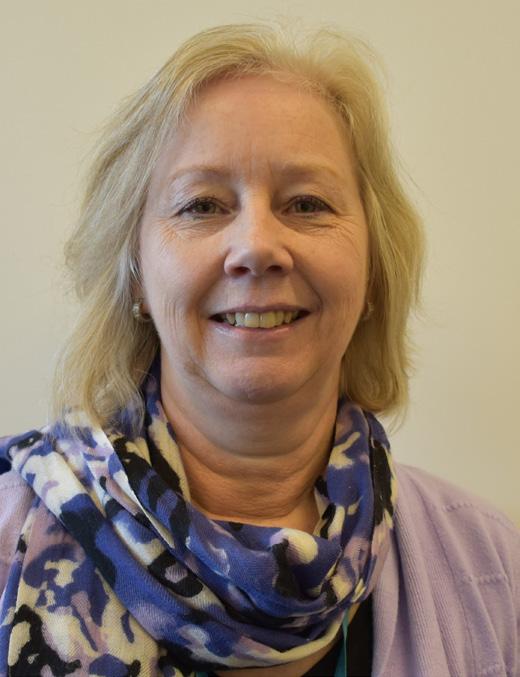
ANGELA IVES Research Fellow, University of Western Australia

MARY THEOPHILUS Head of General Surgery, St John of God Midland Hospital, Colorectal Surgeon

LESLEY MILLAR Research Program Manager, University of Western Australia
within Perth — one public and the other a private hospital contracted to provide public hospital care as well as private care. The sites commenced data capture at different time points, and this is reflected in the follow-up data points captured. During the implementation phase, clinical teams involved in the CIC project anecdotally identified that when the patient completes PROMs prior to/during an appointment these questions start a discussion — particularly when a nurseled interaction is included within the standard consultation processes. Recent interim analysis of PROMs collected from these colorectal cancer patients has identified interesting differences that provide evidence of the benefits of these nurse-led interactions at publicly and privately run hospitals.
Findings: DEMOGRAPHICS
A total of 218 patients had been recruited to the CIC research project at diagnosis (baseline). These were split approximately 2:1 across two sites — Site A (privately run hospital) and Site B (publicly run
hospital). Approximately half of the participants had completed PROMs at both baseline and six months at each site. The age profile was similar, but Site A had fewer females (Table 1).

The Health Advocate • MAY 2023 33
>
Table 1: Demographic profile

FUNCTION SCORES
A review of the EORTC-QLQ-C30 scores found that all function scores for Site A improved at six months compared to Site B. This improvement was seen regardless of the baseline score (Figure 1).
Figure 1: Examples of function scores (higher is better) for EORTC-QLQ-C30


SYMPTOM SCORES
In addition, all symptom scores for Site A improved at six months when compared to Site B; again, regardless of baseline scores (Figure 2).
Figure 2: Examples of symptom scores (lower is better) for EORTC-QLQ-C30


34 The Health Advocate • MAY 2024

“The mean scores calculated provide six function domains — global health status, physical functioning, role functioning, emotional functioning, cognitive functioning, and social functioning scores. Higher functional scores represent a better function.”
GLOBAL HEALTH SCORE
Overall, despite the global health status being lower at Site A at baseline, the improvement in global health status was greater than at Site B at six months (Figure 3).
Figure 3: Global Health status scores (higher is better) for EORTC-QLQ-C30

We explored variables that may have led to these differences. Stoma rates were comparable between sites (Site A — 28.6% had a stoma in place at six months, Site B — 27.3%) and medical personnel largely work across both sites; thus, these factors are unlikely to be the cause of variation. The key difference appeared to be the increased
involvement of nurse specialists in the review and assessment of patient’s wellbeing at Site A, where they can provide continuous support as well as coordinate care and navigate healthcare systems. Nurse specialists asking their patients the PROMs questions potentially allowed provision of immediate support and ongoing identification and management of patient’s needs.
Learnings:
This analysis of PROMs completed by patients with colorectal cancer is exploratory, and further information is required. It is hoped, however, that this information is sufficiently indicative of the potential benefits of nurse-led interactions in patients’ completing PROMS at clinic appointments that a trial can be commenced at Site B to further elucidate this effect. ha
References: Aaronson NK, Ahmedzai S, Bergman B, Bullinger M, Cull A, Duez NJ, Filiberti A, Flechtner H, Fleishman B, deHaes JCJM, Kaasa S, Klee MC, Osoba D, Razavi D, Rofe PB, Schraub S, Sneeuw KCA, Sullivan M, Takeda F. The European Organisation for Research and Treatment of Cancer QLQ-C30: A quality-of-life instrument for use in international clinical trials in oncology. Journal of the National Cancer Institute 1993; 85: 365-376.
The Health Advocate • MAY 2023 35
GraphicStock

CHRISTOBEL SAUNDERS
James Stewart Chair Surgery, University of Melbourne and Vice-President All.can International
 EDUARDO PISANI CEO All.can International
DR. ELIZABETH TAN
Surgical Research Fellow
EDUARDO PISANI CEO All.can International
DR. ELIZABETH TAN
Surgical Research Fellow
University of Melbourne
Measuring the efficiency of cancer care
Development and pilot of an efficiency metrics
Multiple threats to healthcare systems around the world, including economic and workforce pressures, changing patient expectations and sustainability demands, mean it is vital that we deliver the most efficient care possible. All.Can, an international, multi-stakeholder organisation, defines efficiency in cancer care as ‘Care that delivers the best possible health outcomes using the human, financial, infrastructural and technological resources available, with a focus on what really matters to patients and society’ (all.can.org), (All.Can International, 2022).
All.can recognised that to build this efficiency in cancer care a common set of metrics were needed (Ferrara et al, 2002). These need to be personcentred but also broadly applicable across cancer types and geography, and able to be adopted routinely to inform cancer systems if and how they
are delivering high quality efficient care. They need to be broader than the current clinical outcomes available, such as survival and recurrence rates, and more patient-centric than currently collected process measures such as surgical wait times. Relying on current metrics to measure quality and efficiency can give an incomplete picture of a systems performance.
Working with partners from the Health Value Alliance and the University of Southampton, an evidence-based suite of core cancer care efficiency metrics has been developed (Hickey et al, 2023), (all-can.org). While further work led by the University of Amsterdam is developing a ‘playbook’ of how to implement these, we undertook to test these measures in the real world in a single cancer type across two large tertiary hospitals in Melbourne.
36 The Health Advocate • MAY 2024

Development of the metrics involved an initial literature review which identified 13 core metric categories (and 137 individual metrics) based around timeliness and quality of care, a therapeutic alliance and continuity of care, shared decision making, patient-reported outcomes and experiences, psychosocial and survivorship issues including financial toxicity, the patient’s social environment, palliative care, and innovation. These metrics are universal for all cancer types and are evidence-based to deliver measurable improvements in care. They also have the potential to be routinely collected. Following this review, interviews were undertaken with stakeholders, including consumers, clinicians, hospitals, pharma and MedTech industry and policy makers, to refine these findings. They were subsequently distilled into 8 core metrics:
• Time to diagnosis
• Percentage of cancers diagnosed through emergency presentation
• Primary care interval (defined as the number of days from the date of first presentation in primary care with symptoms relevant to the final cancer diagnosis to date of first referral from primary care)
• Time from tissue diagnosis to treatment
• Percentage of patients documented as having seen a Clinical Nurse Specialist
• Percentage of patients who received chemotherapy in the last 14 days of life
• Patient experience
• Patient involvement in decision-making
We are now testing these metrics in two tertiary hospitals in Melbourne, the Royal Melbourne and PeterMac Hospitals, within the unified breast cancer service.
>
The Health Advocate • MAY 2023 37
GraphicStock
“Ultimately, we hope to use this data to ensure care is accessible, patient-centred, evidence-based, with the best possible outcomes for all patients within the resources available.”
Our main objective is an assessment of the feasibility of collecting cancer care efficiency metric variables from routine data sources including the electronic medical record and any disease-specific databases including BreastScreen data. In addition, we are developing a measure of equity of care. Secondary objectives include the interpretation of our data and benchmarking against others as this is rolled out internationally, as well as development of a patient-centred tool to measure person-centred value-based healthcare. Our challenges include the variability in systematic collection of time-dependent variable such as time to diagnosis, lack of a Unique Patient Identifier, and understanding how patient experiences are measured and used in our service.
Ultimately, we hope to use this data to ensure care is accessible, patient-centred, evidencebased, with the best possible outcomes for all patients within the resources available. The data will help optimise allocation of resources and drive an adaptive and learning healthcare system which will improve the efficiency of local practice. This patient-centred tool can then be applied across all cancer types and in multiple locations.
The limitations of this work are the need for greater consumer involvement in developing these metrics and the need to further test these in clinical practice– at institutional, system and even country-wide levels. A playbook to implement these is currently under development by the University of Amsterdam in partnership with All.can International and will be launched in September this year. ha
References: all-can.org
All.Can International. Building efficiency in cancer care. 2022 (available at www.all-can.org)
L Ferrara, M Otto, M Aapro et al. How to improve efficiency in cancer care: Dimensions, methods, and areas of evaluation. J Cancer Policy 2002; 34. https://doi.org/10.1016/j.jcpo.2022.100355
M Hickey , A Youngs , E Pisani et al. The All.Can Cancer Efficiency Metrics Study: A collaborative policy research project to identify a standard set of metrics to measure cancer care ‘efficiency’. J Cancer Policy 2023; 35. https://doi.org/10.1016/j.jcpo.2023.100388 https://www.all-can.org/wp-content/uploads/2022/06/Final_The-Al. Can-Efficiency-Metrics-Study.pdf
Acknowledgements
Matt Hickey and Adele Youngs, Health Value Alliance, Dr Ksenia Crane and team, University of Southampton, UK and Amsterdam University Medical Centre project team leaders Prof. Niek Klazinga, Dr. Dionne Kringos and Dr. Sofia Carvalho.
38 The Health Advocate • MAY 2024
Using a real-world data registry to create personalised care plans for cancer patients: a value-based
cancer care intervention

Stress at diagnosis
Receiving a cancer diagnosis can be devastating. Patients and families are forced to grapple with a life-changing diagnosis, while also trying to comprehend large volumes of information from the specialist team. Understandably, in this stressful context, patients may struggle to understand complex information or recall it after their appointment (Van der Meulen et al, 2008).
Written information specific to a person’s newly diagnosed cancer is not standard for patients or their general practitioners (GPs). Much of the in-consult information is delivered verbally, with variable generic written information given to patients which is not always relevant. GPs
DR GRACE GARD
Medical Oncologist and Clinician Research Fellow
JOANNA OAKLEY Consumer Coordinator
KELSEY SERENA Research Coordinator
MICHAEL HAROLD Project Manager
HELEN ANDERSON consumer
JUDI BYRNE consumer
JO COCKWILL consumer
GRAEME DOWN consumer
GEORGE KIOSSOGLOU consumer
also often receive insufficient information from oncologists regarding their patient’s cancer diagnosis and planned treatment (Lizama et al, 2015). Googling the information is fraught, with increasingly complex treatments personalised based on the cancer pathology and individual specifics like age and co-morbidities.
A need for clear, personalised information about diagnosis, planned treatment, and follow up is apparent for patients newly diagnosed with cancer. Providing patients with accessible, personalised information that they can review post-appointment and share with friends and family may improve patient understanding of a cancer diagnosis, reduce anxiety, and increase compliance with follow-up appointments1.
>
The Health Advocate • MAY 2023 39
“Personalised patient details such as diagnosis, planned treatment, and follow-up schedule are extracted from the database to populate this care plan. This personalised care plan is given to patients at the time of diagnosis, with a copy securely provided to their GP. ”

Background for the personalised care plan
A previous study undertaken by a Townsville oncology group demonstrated the value of providing patients with personalised written care plans, reporting that they were well-received and that patients found them informative (Vaitiekunas et al, 2015). However, as the care plans had to be generated for each patient from scratch by the medical oncologist, there were significant delays in clinic running times. Overcoming this burden on medical and support staff is critical to sustainably integrating personalised care plans into the clinic environment.
An existing resource containing information about a patient’s diagnosis, planned treatment, and follow-up offers a solution to this administrative burden. The WEHI-CRC database (formerly ACCORD) has been running since 2009 and prospectively

collects patient data for consecutive patients diagnosed with colorectal cancer. Collecting real world patient data improves knowledge of the treatment and outcomes of patients, outside of the tightly controlled clinical trial landscape. This data can be interrogated to determine trends in patient factors. Here, a new use is considered; leveraging personalised patient data for a patient education initiative by producing personalised care plans.
Incorporating the personalised care plan into routine care
Utilising the existing WEHI-CRC database, we established ‘A personalised care plan to improve understanding of a rectal cancer diagnosis and planned management’ (the RECAP study, HREC approval 23/WH/91656). Our research team of oncologists, project staff, and consumers with lived experience of cancer co-designed a care plan template. Personalised patient details such
40 The Health Advocate • MAY 2024

as diagnosis, planned treatment, and follow-up schedule are extracted from the database to populate this care plan. This personalised care plan is given to patients at the time of diagnosis, with a copy securely provided to their GP. The RECAP study is currently finalising recruitment, with patients diagnosed with rectal cancer at Western Health hospital provided with the personalised care plan between August 2023 and May 2024.
This is an example of mobilising patient information, typically used for audit and research purposes, to benefit the patient in clinic at the time of diagnosis and throughout their cancer journey. As the data is routinely collected and automatically populates the personalised care template, this is a low effort intervention with no additional time burden for medical or support staff. Clinicians and other clinic staff can access and re-generate the personalised care plan at any time
during a patient’s treatment, meaning that any change in treatment can also be reflected in an updated personalised care plan.
The ability to deliver a high-value patient education intervention at a low cost demonstrates the ripeness of real-world data collected in cancer registries to be utilised for value-based healthcare interventions. Given the WEHI-CRC registry is active across multiple institutions, there is great potential to expand the personalised care plan. ha
References:
Van der Meulen, N., Jansen, J., van Dulme, S., Bensing, J., & van Weert, J. Interventions to improve recall of medical information in cancer patients: a systematic review of the literature. PsychoOncology, 2008;17:857-868. doi: 10.1002/pon.1290
Lizama, N., Johnson, C.E., Ghosh, M., Gard, N., Emery, J.D., & Saunders, C. Keeping primary care ‘in the loop’: General practitioners want better communication with specialists and hospitals when caring for people diagnosed with cancer. Asia-Pacific Journal of Clinical Oncology, 2015;11:152-159. doi: 10.1111/ajco.12327
Vaitiekunas, L., Coomer, K., Turner, C., Brown, A. and Sabesan, S. Medical Oncology Care Plan: a tool for improving the provision of clinical information to patients. Intern Med J, 2015;51:13321335. doi:10.1111/imj.15449
The Health Advocate • MAY 2023 41
GraphicStock
Become an AHHA member
Help make a difference on health policy, share innovative ideas and get support on issues that matter to you – join the AHHA.
The Australian Healthcare and Hospitals Association (AHHA) is the ‘voice of public healthcare’. We have been Australia’s independent peak body for public and not-forprofit hospitals and healthcare for over 70 years.
Our vision is a healthy Australia, supported by the best possible healthcare system. AHHA works by bringing perspectives from across the healthcare system together to advocate for effective, accessible, equitable and sustainable healthcare focused on quality outcomes to benefit the whole community.
We build networks, we share ideas, we advocate and we consult. Our advocacy and thought leadership is backed by high quality research, events and courses, consultancy services and our publications.
AHHA is committed to working with all stakeholders from
across the health sector and membership is open to any individual or organisation whose aims or activities are connected with one or more of the following:
• the provision of publiclyfunded hospital or healthcare services
• the improvement of healthcare
• healthcare education or research
• the supply of goods and services to publicly-funded hospitals or healthcare services.
Membership benefits include:
• capacity to influence health policy
• a voice on national advisory and reference groups
• an avenue to key stakeholders including governments, bureaucracies, media, likeminded organisations and other thought leaders in the health sector
• access to and participation in research through the Deeble Institute for Health Policy Research
• access to networking opportunities, including quality events
• access to education and training services
• access to affordable and credible consultancy services through JustHealth Consultants
• access to publications and sector updates, including: -Australian Health Review
-The Health Advocate
-Healthcare in Brief
-Evidence Briefs and Issues Briefs.
To learn about how we can support your organisation to be a more effective, innovative and sustainable part of the Australian health system, talk to us or visit ahha.asn.au/membership.
42 The Health Advocate • MAY 2024
More about the AHHA
AHHA Board
The AHHA Board has overall responsibility for governance including the strategic direction and operational efficiency of the organisation.
Hon Jillian Skinner Chair
Dr Michael Brydon University of Notre Dame
Ms Yasmin King SkillsIQ
Ms Susan McKee Dental Health Services Victoria
Dr Kim Webber cohealth
Mr Michael Culhane ACT Health Directorate
Mr Anthony Schembri AM Independently Appointed Board Director
Mr Mike Bosel
Brisbane South Primary Health Network
Dr Tina Janamian Australian General Practice Accreditation Limited
AHHA National Council
The AHHA National Council oversees our policy development program. The full list of Council members can be found at: ahha.asn.au/governance
Secretariat
Ms Kylie Woolcock Chief Executive
A/Prof Rebecca Haddock Executive Director Knowledge Exchange
Ms Ellen Davies Communications Manager
Mr Kevin Chacko Research and Policy Officer
Ms Suzzie Harvey Director, Business Development
Ms Emma Hoban Manager, Australian Centre for Value-Based Health Care
Ms Naomi Sheridan Policy Manager
Ms Emma Walsh Policy Officer
Mr Gregory Mowle Finance and Operations Manager
AHHA sponsors
The AHHA is grateful for the support of HESTA Super Fund.
Other organisations support the AHHA with Corporate, Academic, and Associate Membership and via project and program support.
Contact details
AHHA Office
Unit 8, 2 Phipps Close Deakin ACT 2600
Postal address PO Box 78
Deakin West ACT 2600
Membership enquiries
T: 02 6162 0780
F: 02 6162 0779
E: admin@ahha.asn.au
W: www.ahha.asn.au
The Health Advocate, general media and advertising enquiries
Ellen Davies
T: 02 6180 2826
E: communications@ahha.asn.au
The views expressed in The Health Advocate are those of the authors and do not necessarily reflect the views of the Australian Healthcare and Hospitals Association. ISSN 2200-8632
The Health Advocate • MAY 2023 43 FROM THE AHHA DESK


All the latest news and updates from AHHA, The Deeble Institute for Health Policy Research and the Australian Centre for Value Based Health Care.
Subscribe to AHHA News

Subscribe to the AHHA Events & Training Newsletter to ensure that you are kept up to date with the latest opportunities in your sector.
Subscribe to Events
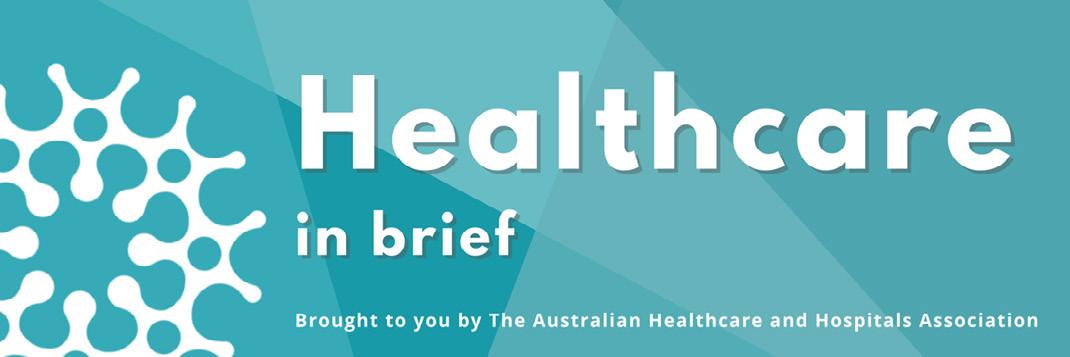
Sign up to our weekly Healthcare in Brief email newsletter from the AHHA. Keep your finger on the pulse of what's happening in Australia's healthcare system.
Subscribe to HIB

Keep up to date with all the latest news and media releases and updates from AHHA.
Subscribe to AHHA Media








 KYLIE WOOLCOCK Chief Executive AHHA
KYLIE WOOLCOCK Chief Executive AHHA













 RUSSELLE TRINIDAD Senior Manager Quality Improvement, Capital Health Network
RUSSELLE TRINIDAD Senior Manager Quality Improvement, Capital Health Network
 SHEILA BRITO Allied Health Engagement Officer, Capital Health Network
SHEILA BRITO Allied Health Engagement Officer, Capital Health Network




 Dr Simon Craig
Dr Simon Craig


 SUSAN MCKEE CEO, Dental Health Services Victoria
SUSAN MCKEE CEO, Dental Health Services Victoria


 TRACEY DUFFY First Assistant Secretary –Medical Devices and Product Quality Division, Therapeutic Goods Administration
TRACEY DUFFY First Assistant Secretary –Medical Devices and Product Quality Division, Therapeutic Goods Administration

















 EDUARDO PISANI CEO All.can International
DR. ELIZABETH TAN
Surgical Research Fellow
EDUARDO PISANI CEO All.can International
DR. ELIZABETH TAN
Surgical Research Fellow









